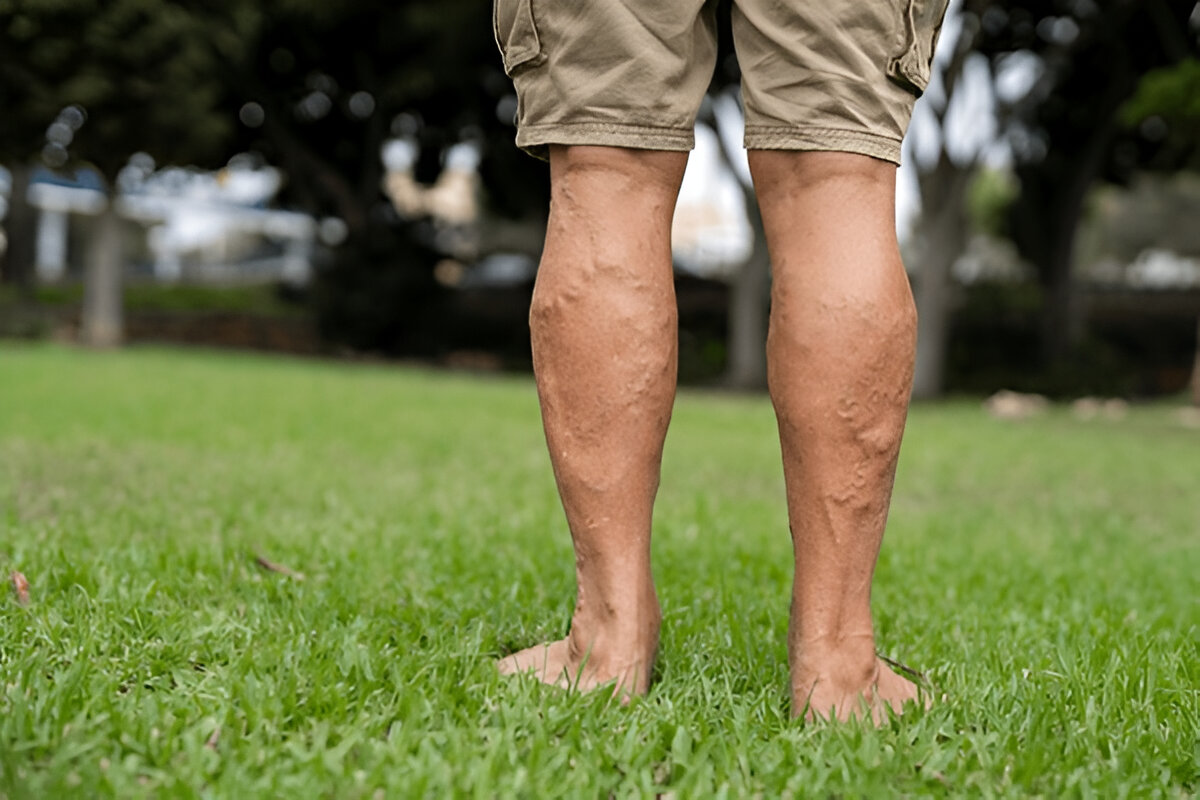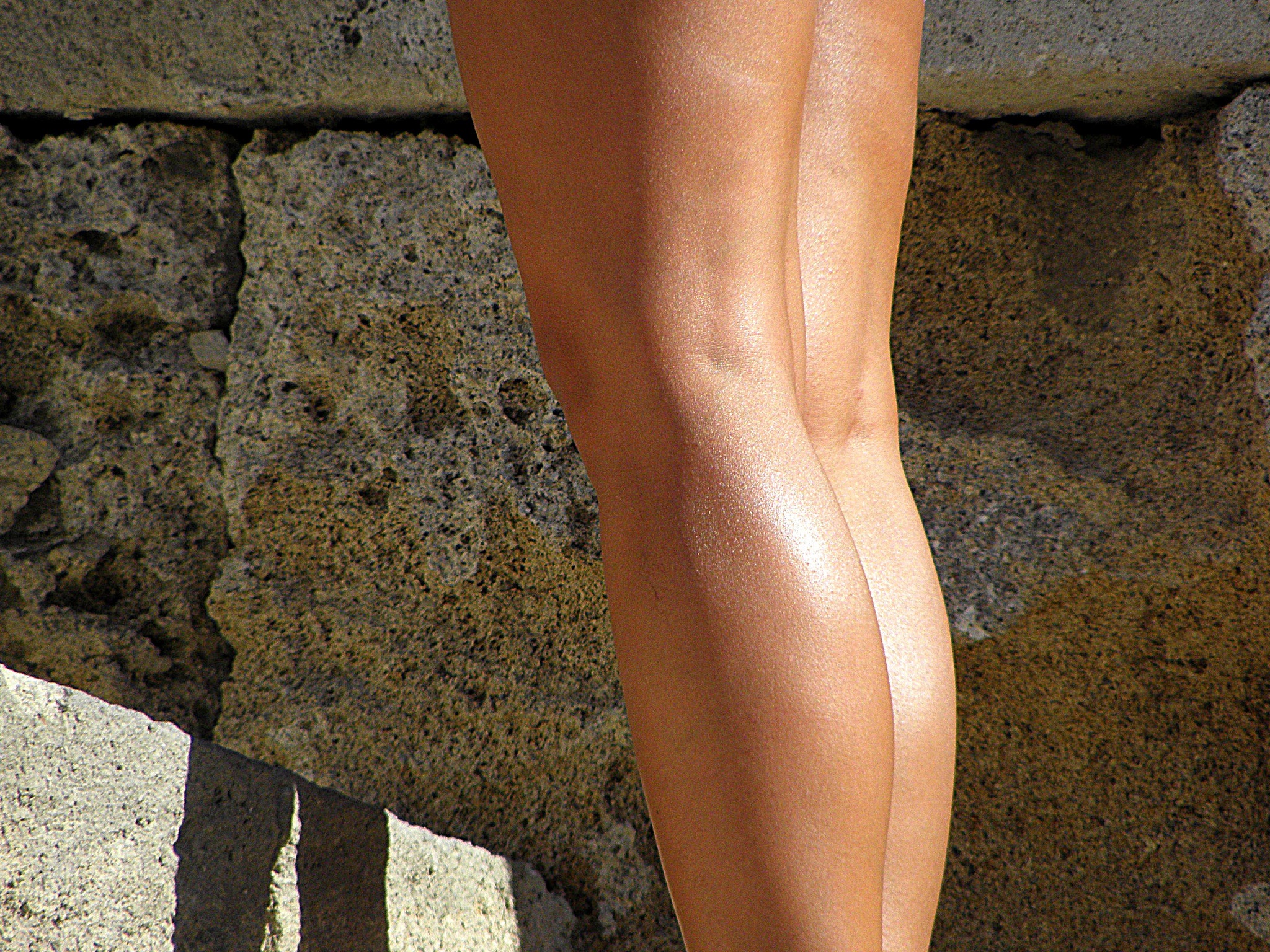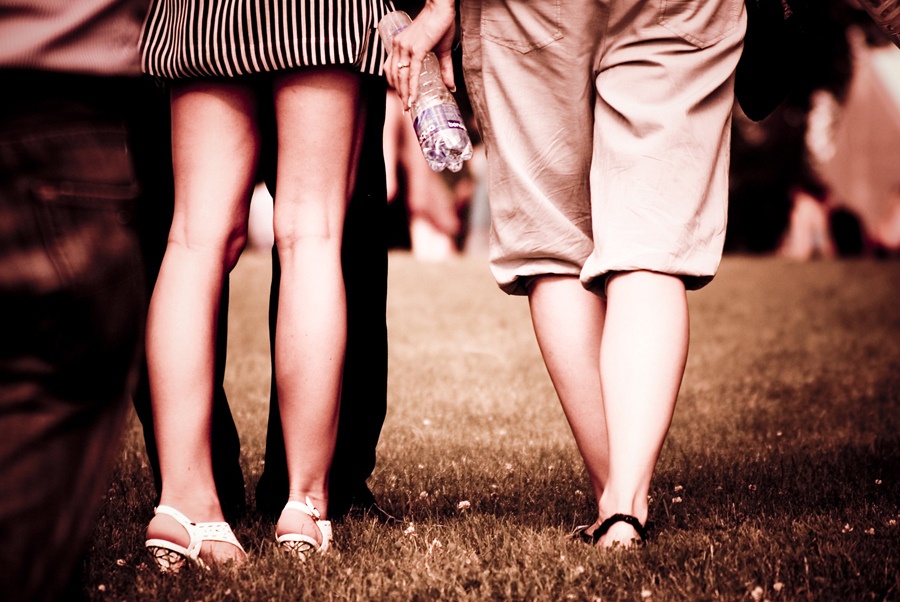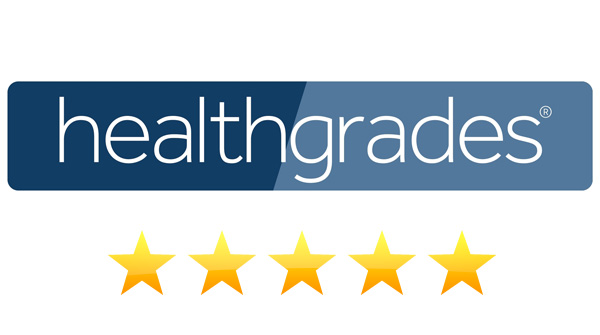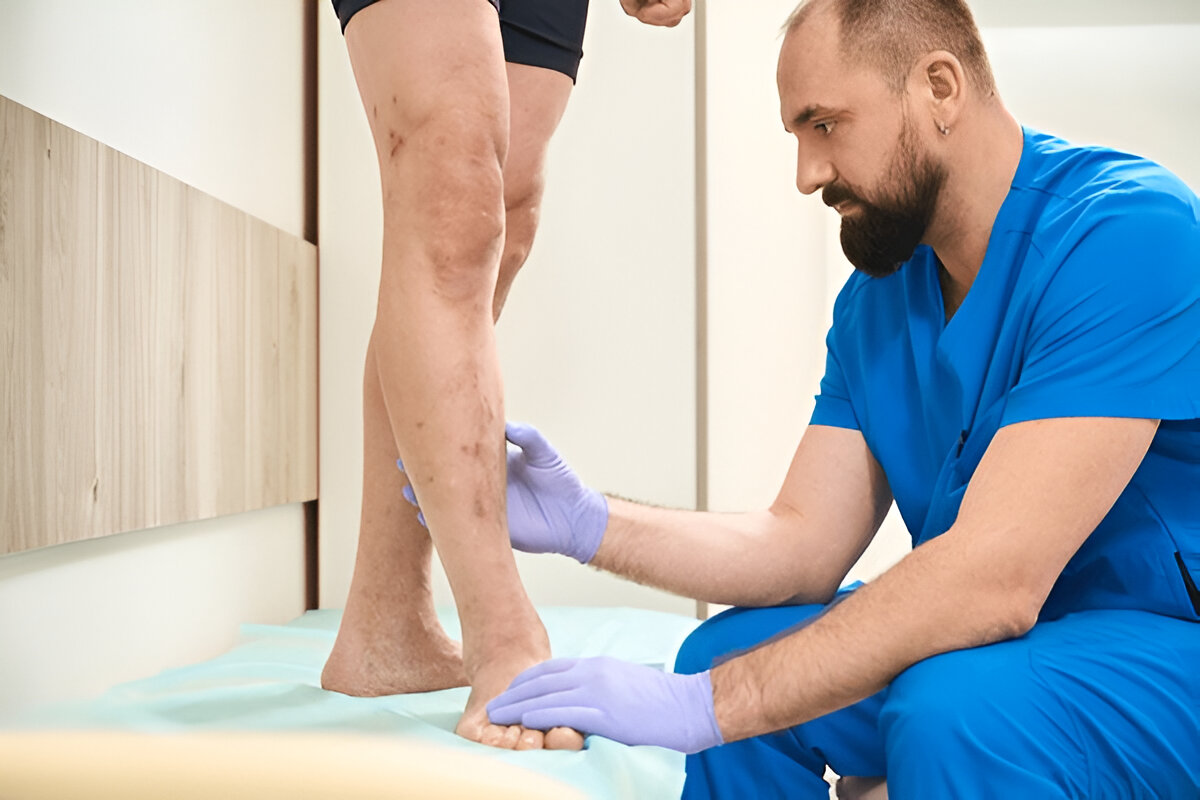
Spider veins on the legs and face are a common cosmetic issue that many people experience as they age. These small, twisted blood vessels are usually visible beneath the skin and often resemble spider webs or tree branches. While spider veins don’t typically cause significant health problems, they can be a source of frustration and self-consciousness.
In this comprehensive guide, we’ll explore the causes of spider veins, how they differ from varicose veins, their symptoms, and the most effective treatments. We’ll also discuss prevention tips and when you should seek professional care for your veins. If you’re looking for the best solutions for spider veins on legs, Advanced Vein Care offers expert treatment options.
What Are Spider Veins?
Spider veins are small, dilated blood vessels that appear near the surface of the skin. They are often red, blue, or purple in color and typically form in the legs, ankles, feet, or face. They get their name due to their spider web-like appearance.
Unlike varicose veins, which are larger, bulging veins that can cause discomfort, spider veins tend to be more superficial and do not typically cause pain. However, they can still be an aesthetic concern for many people.
Spider Veins vs Varicose Veins: Understanding the Difference
It’s easy to confuse spider veins with varicose veins, but there are some key differences between the two:
Spider Veins:
- Appearance: Small, thin, red, purple, or blue veins.
- Size: Typically less than 1 millimeter in diameter.
- Location: Mostly appears on the legs, face, feet, and ankles.
- Symptoms: Generally no pain, but can cause mild discomfort or itching.
- Cause: Often cosmetic and related to genetics, sun exposure, or hormonal changes.
Varicose Veins:
- Appearance: Larger, bulging, and twisted veins.
- Size: Typically larger than 3 millimeters in diameter.
- Location: Most commonly found in the legs.
- Symptoms: Can cause pain, swelling, and heaviness in the legs.
- Cause: Caused by weakened vein valves and poor blood circulation.
What Causes Spider Veins on Legs?
The formation of spider veins is usually linked to a combination of genetic, environmental, and lifestyle factors. Here are some common causes:
1. Genetics
A family history of spider veins significantly increases the risk of developing them. If your parents or close relatives have spider veins, you may be more prone to them as well.
2. Hormonal Changes
Hormonal changes, especially during pregnancy, menopause, or while taking birth control, can cause veins to weaken and lead to the development of spider veins.
3. Prolonged Sitting or Standing
Sitting or standing for long periods without moving can reduce blood circulation, leading to increased pressure on the veins, which may cause spider veins to form.
4. Obesity
Excess body weight places added pressure on your veins, increasing the likelihood of spider veins, especially in the lower body.
5. Age
As we age, the walls of our veins become weaker, and the valves within the veins may not function as effectively. This can contribute to the development of spider veins over time.
6. Sun Exposure
For facial spider veins, excessive sun exposure can damage the skin and blood vessels, leading to the formation of spider veins on the face.
Symptoms of Spider Veins: What to Look For
In most cases, spider veins are primarily a cosmetic issue. However, they can cause some discomfort or mild symptoms, such as:
- Itching: The area around the spider veins may feel itchy or irritated.
- Pain or Aches: Some people experience a dull, aching pain or heaviness in the affected area.
- Burning Sensation: In rare cases, there may be a burning sensation in the areas where spider veins are present.
- Swelling: While not common, mild swelling can occur near the veins.
If you notice more serious symptoms like significant pain, ulcers, or blood clots, it’s essential to consult a healthcare provider.
How to Get Rid of Spider Veins: Treatment Options
While spider veins are not usually harmful, many people seek treatment to improve their appearance. Fortunately, there are several effective treatment options available:
1. Sclerotherapy
Sclerotherapy is the most common treatment for spider veins. It involves injecting a special solution into the veins, which causes them to collapse and fade over time. This minimally invasive treatment has a high success rate and requires no downtime.
2. Laser Therapy
Laser therapy uses concentrated light to target and close the affected veins. This non-invasive treatment is effective for smaller veins, especially those on the face. It’s a quick procedure with minimal recovery time.
3. Endovenous Laser Therapy (EVLT)
For larger spider veins or veins that are difficult to treat with other methods, EVLT uses a laser to close off the vein from within. This treatment is more invasive than sclerotherapy but still minimally invasive compared to traditional surgery.
4. Microphlebectomy
In cases where spider veins are more prominent, microphlebectomy may be recommended. This is a surgical procedure that involves removing veins through small incisions. It’s generally used for larger veins that do not respond to other treatments.
5. Compression Stockings
While compression stockings do not remove spider veins, they can help alleviate some of the symptoms associated with them, such as swelling and discomfort. They work by improving circulation and reducing pressure on the veins.
How to Prevent Spider Veins: Lifestyle Changes
Preventing spider veins can often be achieved through a combination of lifestyle changes. Here are some effective tips:
1. Stay Active
Regular physical activity, especially activities like walking, jogging, and cycling, can improve circulation and reduce the risk of spider veins.
2. Elevate Your Legs
Elevating your legs when sitting or lying down can reduce pressure on the veins and promote better circulation.
3. Wear Compression Stockings
Compression stockings can help prevent the formation of spider veins by improving circulation and preventing blood from pooling in the veins.
4. Maintain a Healthy Weight
Maintaining a healthy weight reduces pressure on your veins, lowering the risk of spider veins forming.
5. Avoid Prolonged Standing or Sitting
If you must stand or sit for long periods, take breaks to walk around and stretch your legs to improve circulation.
Spider Veins on the Feet and Ankles
Many people develop spider veins on feet and ankles, especially if they are on their feet a lot during the day. These veins can be more noticeable due to their proximity to the skin’s surface.
Treatment for Spider Veins on Feet and Ankles:
- Sclerotherapy is often used for spider veins on the feet and ankles, as it can target veins that are more challenging to treat with other methods.
- Compression socks can also help reduce symptoms like swelling and discomfort, especially for people with jobs that require standing for long periods.
Are Spider Veins Harmful? When to Seek Treatment
While spider veins are usually harmless, in some cases, they can cause discomfort or indicate poor circulation. Here’s when you should seek professional treatment:
- Pain or discomfort: If your spider veins are causing persistent pain or aching, it’s worth exploring treatment options.
- Swelling or redness: If your veins become swollen, red, or inflamed, this may be a sign of an underlying issue that needs to be addressed.
- Infection: Rarely, spider veins can become infected, especially if there’s injury to the skin over the veins. In this case, seek immediate medical attention.
If you’re unsure about the severity of your spider veins or are considering treatment, it’s a good idea to consult a specialist at Advanced Vein Care for an evaluation.
FAQs
1. What are spider veins?
Spider veins are small, dilated blood vessels that appear near the surface of the skin, typically in the legs, ankles, feet, or face.
2. What causes spider veins?
Spider veins are often caused by genetics, hormonal changes, obesity, and prolonged sitting or standing. They can also be triggered by sun exposure, especially for facial spider veins.
3. Are spider veins dangerous?
Spider veins are typically harmless but can cause cosmetic concerns and mild discomfort. In rare cases, they may signal poor circulation.
4. How can I get rid of spider veins?
Treatments like sclerotherapy, laser therapy, and compression stockings can help reduce the appearance of spider veins.
5. Can spider veins be prevented?
You can prevent spider veins by staying active, maintaining a healthy weight, wearing compression stockings, and avoiding prolonged sitting or standing.
6. What’s the difference between spider veins and varicose veins?
Spider veins are smaller and closer to the skin’s surface, while varicose veins are larger, bulging veins that often cause pain and discomfort.
7. How long does it take to treat spider veins?
Treatment times vary depending on the method used, but most treatments are quick and require minimal recovery time.
Spider veins may be a cosmetic concern, but they don’t have to be a permanent one. With the right treatments, you can improve the appearance of your legs and feel more confident in your skin. If you’re dealing with spider veins on legs or other areas of the body, consult with a specialist at Advanced Vein Care for personalized treatment options.

